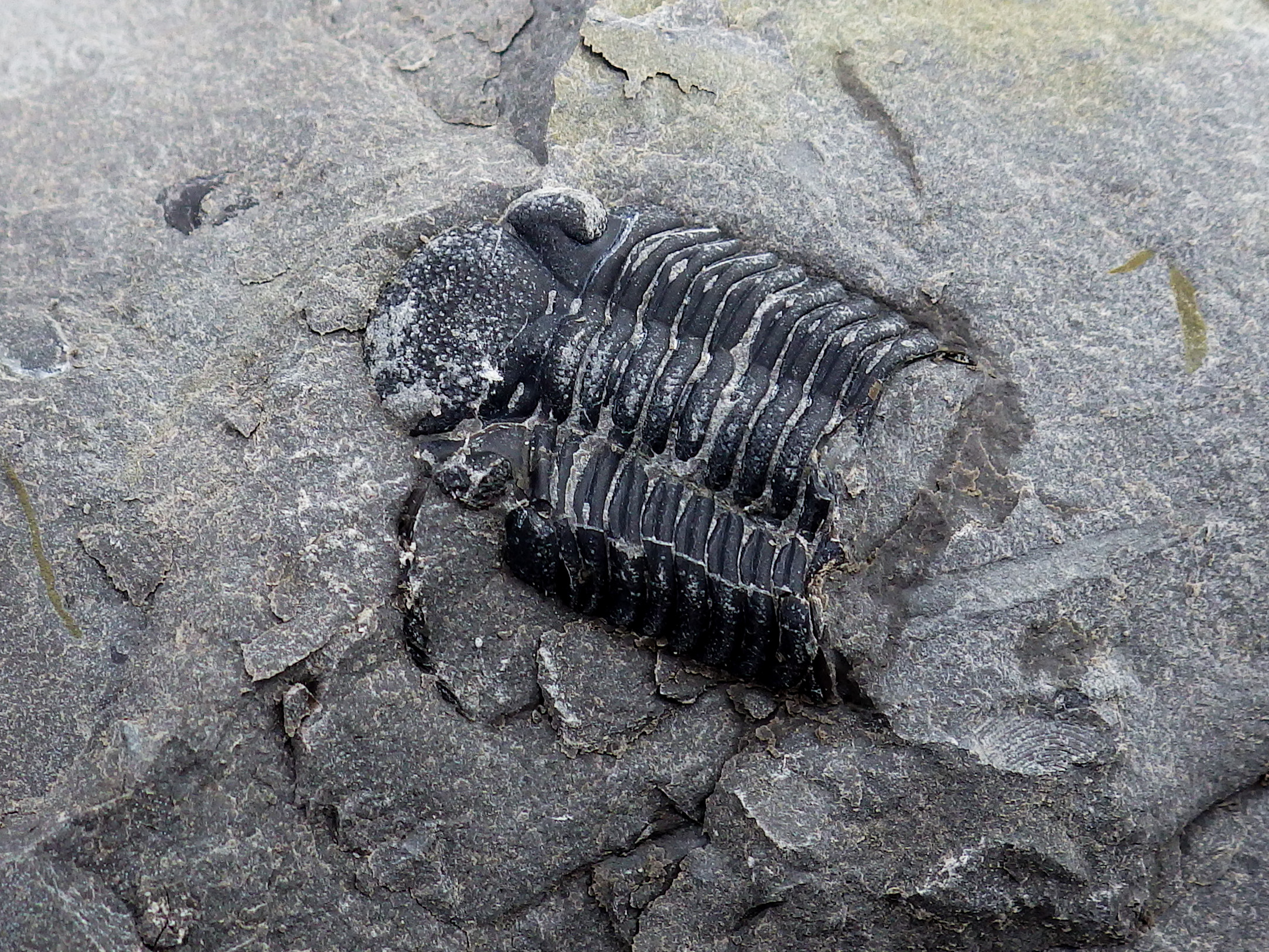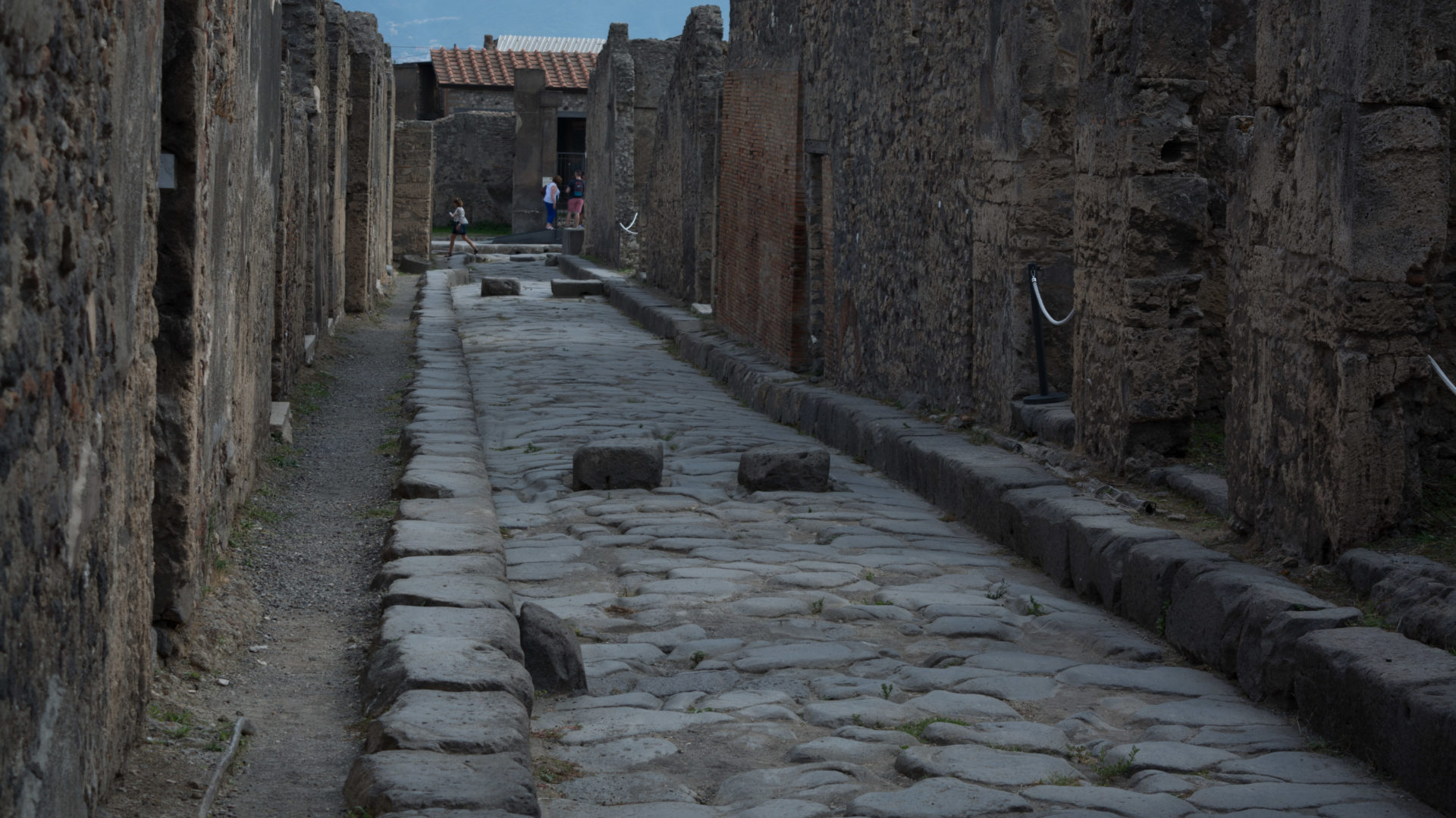My father, brother, and I have an annual tradition of going fossil hunting in the spring. We usually go to a different site each year, bringing tools if permitted, and spend a weekend searching for any interesting fossils we can find. The most sought-after find, however, is the trilobite.
Trilobites were a family of small animals with hard shells and soft bodies, similar to horseshoe crabs. They lived in the ancient seas (especially on coral reefs) early in the Earth’s history. Hundreds of millions of years before the dinosaurs, Trilobites proliferated throughout much of the prehistoric oceans, including the area that is now the Great Lakes region. First appearing about 520 million years ago, shortly after the Cambrian Explosion, they survived in one form or another until the Permian Mass Extinction Event wiped them out about 250 million years ago. This was the largest and most devastating mass extinction event in Earth’s history, and the exact cause is still unknown. It is sometimes referred to as “The Great Dying.” Those lucky species that survived this event would go on to dominate the world in later eras, including the ancestors of the dinosaurs. But the trilobites would not be among them.
Trilobites come in many individual species, each with their own unique appearance, but they are all easily recognized by their distinctive “spine-and-rib” appearance:
(Photo credit: Wikipedia)

To find the trilobites, we decided to go to Penn Dixie Fossil Park in upstate New York, just outside of Buffalo. This is an old quarry where members and the general public are permitted to search for fossils and to keep what they find. The site charges admission, and tools are available to rent if you do not have them with you. Once a year the site hosts a “Dig with the Experts,” during which a new layer of rock is opened up and those with tickets can dig with tools while being accompanied by experienced paleontologists (both professional and amateur). The experts are on hand to answer any questions that the guests may have, help them to identify the fossil species that they find, and provide tips on breaking the fossils out of the rocks (when possible). They also have no shortage of stories to share! This year we were lucky enough to get tickets for the 2018 Dig with the Experts, a sold-out event with 200 guests in attendance.
Here is a link to Penn Dixie’s website:
We had a 6 hour drive to Penn Dixie, so we took Friday off of work and spent the morning packing our clothes and tools for the dig. We got on our way about mid-day. After meeting briefly at the hotel and getting checked in, my father, brother, and I headed out for dinner and enjoyed some nice father-son time.
Heading back to the hotel for a good night’s sleep, we got up early the next morning and met in the lobby for breakfast. The site opened at 8, and we did not want to be late! Arriving promptly at 8, we went to the front desk to check in.
The fossils at Penn Dixie all come from the Devonian period, which lasted from approximately 420-360 million years ago. Commonly known as the “Age of Fishes,” the Devonian period was a time when trilobites were in their prime. The sign at the entrance to Penn Dixie reflects this well, along with an homage to a certain popular dinosaur film:

Near the front desk are several items for sale including T-shirts, books, and posters. There are also some helpful displays that show visitors what kind of fossils they can expect to find:

After checking in, the group was directed to the shelter house for a quick presentation from the experts. Here we could see a sidewalk stretching back through the site, and some rock piles in the distance where previous digs had been done:

Our first speaker was Penn Dixie’s director, Dr. Phil Stokes, who told us what to expect during the dig:

Our second speaker was Jay Wollin, Penn Dixie’s lead educator, who gave us a safety overview:

Then we headed down the sidewalk to start the dig:

There were plenty of rock piles available for the guests to work on. After selecting one for ourselves, we looked it over and found several fossils already sprouting eagerly out of the rock:

With the experts making their rounds, the dig began:

My most-frequently used tool was this rock hammer. Designed for chipping and breaking stone, it was exactly the right tool for putting cracks in the larger pieces:

As we broke the rocks into smaller and smaller pieces, looking for fossils as we went, we eventually reached a point where more precision was required. For this we used cold chisels, which we placed between layers and then tapped with the rock hammer to split the layers apart:

Over and over, for the rest of the morning, we repeated this process: Crack the rock with the hammer, split the layers with the chisel. Each successful split was like scratching off a lottery ticket. Sometimes we would find nothing. But other times we would find a beautifully preserved trilobite, finally seeing the light of day after 400 million years:

Whenever we found a trilobite we would also have a mold on the opposite layer, perfectly matching the fossil:

About mid-day a food truck arrived to sell lunch. Penn Dixie arranges for a food truck to arrive during the Dig with the Experts every year. This year it was The Cheesy Chick, which specializes in grilled cheese sandwiches:

After breaking up rocks all morning, we had worked up quite an appetite! Since it was cool and rainy on the day we were digging, hot food was a very welcome break:

After eating lunch, it was time to get back to work splitting rocks and collecting as many trilobites as we could. The rest of the group was hard at work too.
The most breathtaking find of the day, discovered in a rock pile just a few feet from where we were digging, was this beautiful cluster of 3 intact trilobites and a fragment of a 4th. I have intentionally over-processed this picture to get the fossils to stand out clearly:

At the request of this piece’s proud new owner, I placed my rock hammer near the specimen to serve as a reference for size comparison. After allowing him to take a picture, I asked him for permission to take one for myself:

On the opposite side of us, another guest found this remarkably intact sample of an undescribed species of trilobite known as a bellacartwrightia: (this picture is also over-processed to make the specimen stand out)

The expert who looked at this specimen was very impressed by it, and gave the new owner some advice on cleaning and restoring it. He also asked for photographs, because having pictures of a specimen as well-preserved as this one goes a long way towards documenting the species!
As we continued to dig in our own rock pile, we eventually found a bellacartwrightia for ourselves:


Elsewhere in the same rock, we found yet another specimen of the same species:

We eventually filled 2 buckets with samples to take home! Some were large, others were small, but all were seeing the light of day for the first time in 400 million years.
With more rain moving in and the rock piles all now reduced to rubble, we packed up our tools and headed back to the hotel shortly before 5pm. After treating ourselves to steaks and beer for dinner, we headed home the next morning. It will take quite some time to clean and categorize all of the fossils we collected, but it is a task we are very much looking forward to!
